Tradescantia L.
wandering Jew, spiderwort, spider lily, inchplant
Commelinaceae
Commelina, Floscopa, Murdannia
tropical and temperatetemperate:
(adj) of the climatic zone between boreal and tropical
Americas
(nine species plus cultivated hybrids and varieties)
Tradescantia ernestiana E.S.Anderson & Woodson
T. fluminensis Vell.
T. hirsuticaulis Small
T. occidentalis (Britton) Smyth
T. ohiensis Raf.
T. pallida (Rose) D.R.Hunt
T. subaspera Ker Gawl.
T. virginiana L.
T. zebrina Bosse
Tradescantia fluminensis is introduced into Europe, Africa, temperatetemperate:
(adj) of the climatic zone between boreal and tropical
Asia, Australia, New Zealand, the Galapagos and the United States.
T. pallida is introduced into the West Indies, Canary Islands, Madeira, Spain, southeastern United States and parts of South America.
T. virginiana is introduced into Europe.
T. zebrina is introduced into the United States, Australia, various Pacific Islands, Spain, the Azores, Canary Islands, Madeira, the Caribbean, Central and South America, Tanzania, and east and southeast Asia.
Tradescantia fluminensis and T. pallida can be weedy
creeping terrestrialterrestrial:
(adj) growing on land as opposed to living in water
to amphibiousamphibious:
(adj) of a plant able to live on land or in water
herb
Roots fleshy, thin or sometimes tuberous. Stem creeping to ascending, unbranched or sparsely branched, ± succulent, glabrousglabrous:
(adj) without hairs or scales
to pilose. Leaves variable, spirally arranged or distichousdistichous:
(adj) (of leaves or flowers) distinctly arranged in two ranks along an axis; leaves may be opposite or alternate
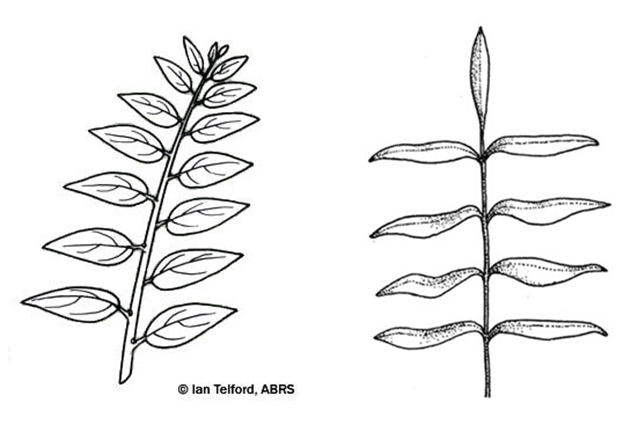 ; sessilesessile:
; sessilesessile:
(adj) attached directly, without a stalk
 or rarely petiolatepetiolate:
or rarely petiolatepetiolate:
(adj) relating to or in the form of a petiole; bearing petioles
; leaf bladeblade:
(n) (syn. lamina) the flat, expanded part of a leaf, frond, or petal (excluding, e.g., the petiole)
 linear or lanceolatelanceolate:
linear or lanceolatelanceolate:
(adj) lance-shaped; widest point below the middle, tapering to the apex
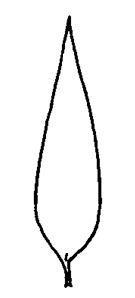 -elliptic to ovateovate:
-elliptic to ovateovate:
(adj) egg-shaped in outline; generally with the broad end at or near the base
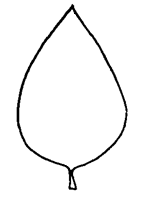 , glaucousglaucous:
, glaucousglaucous:
(adj) covered with a waxy whitish or bluish coating
, glabrousglabrous:
(adj) without hairs or scales
or sparsely pilose; apexapex:
(n) the point farthest from the point of attachment; the tip (often pointed)
acuminate or acuteacute:
(adj) tapering to a sharp, pointed apex with more or less straight sides; broader than acuminate; forming an angle of less than 90 degrees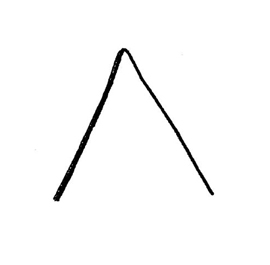 ; base rounded to cuneatecuneate:
; base rounded to cuneatecuneate:
(adj) wedge-shaped; triangular, with narrow end at the base
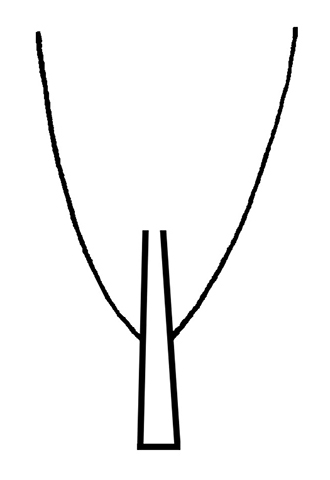 , gradually constricted into sheath. Inflorescenceinflorescence:
, gradually constricted into sheath. Inflorescenceinflorescence:
(n) the arrangement of flowers on the floral axis
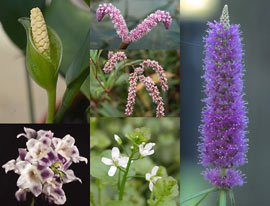 of pairs of tightly coiled helicoidhelicoid:
of pairs of tightly coiled helicoidhelicoid:
(adj) coiled like a spiral or helix
cymes, terminalterminal:
(adj) at the apex
or arrranged in distal leaf axils; typically sessilesessile:
(adj) attached directly, without a stalk
 , though axillaryaxillary:
, though axillaryaxillary:
(adj) in, of, or produced from an axil
inflorescenceinflorescence:
(n) the arrangement of flowers on the floral axis
 may be pedunculatepedunculate:
may be pedunculatepedunculate:
(adj) borne on or possessing a peduncle
; cymes few- to several-flowered, with 2 or 3 leaf-like, occasionally reduced bracts; bracteoles present; pedicelspedicel:
(n) the stalk of a single flower in an inflorescence, or of a grass spikelet
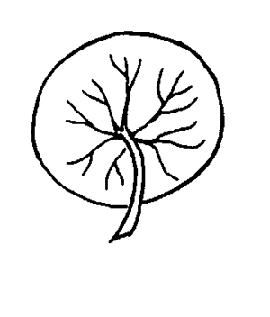 variably pubescentpubescent:
variably pubescentpubescent:
(adj) (1) covered with short, soft hairs; (2) bearing hairs
or glabrousglabrous:
(adj) without hairs or scales
. Flowers bisexualbisexual:
(adj) having both male and female sexual reproductive structures on one individual or in one flower
; sepals 3, free, typically ellipticelliptical:
(adj) in the form of an ellipse (oval)
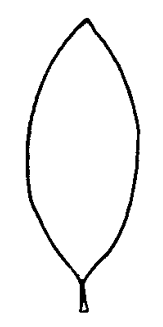 , ± concave, glabrousglabrous:
, ± concave, glabrousglabrous:
(adj) without hairs or scales
, green, may be suffused with red or purple; petals 3, free, rarely with basally connateconnate:
(adj) of plant parts congenitally united into a single structure
clawsclaw:
(n) narrowed base of some petals and sepals
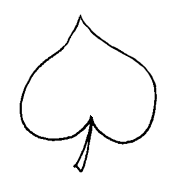 , ovateovate:
, ovateovate:
(adj) egg-shaped in outline; generally with the broad end at or near the base
 , white to pink, blue, violet; stamens 6, filaments pilose or glabrousglabrous:
, white to pink, blue, violet; stamens 6, filaments pilose or glabrousglabrous:
(adj) without hairs or scales
; stylestyle:
(n) in a flower, the narrow and elongated part of the pistil between the stigma and the ovary
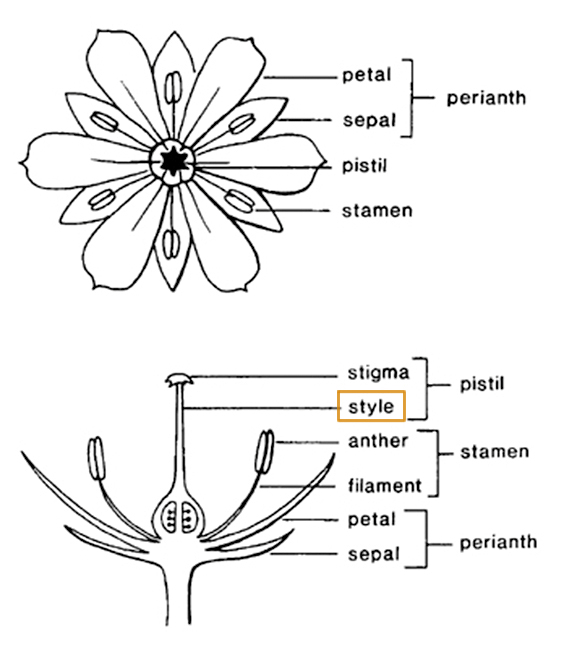 filiform, stigmastigma:
filiform, stigmastigma:
(n) the portion of the pistil that is receptive to pollen
capitate.
damp, humid and shaded places, wet meadows, rich woods, riparianriparian:
(adj) growing by rivers or streams; of, adjacent to, or living on, the banks of a river, lake, pond, etc.
areas, alluvial terraces and ravines, along streams; some may tolerate waterlogging; often dominant herb in disturbed and urban riparianriparian:
(adj) growing by rivers or streams; of, adjacent to, or living on, the banks of a river, lake, pond, etc.
habitats
A genus comprising 75 species, none of which are true aquatics, just somtimes amphibiousamphibious:
(adj) of a plant able to live on land or in water
. Several species are cultivated as ornamental indoor and garden plants, as well as aquarium or terrarium plants.